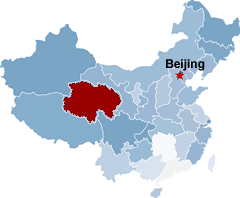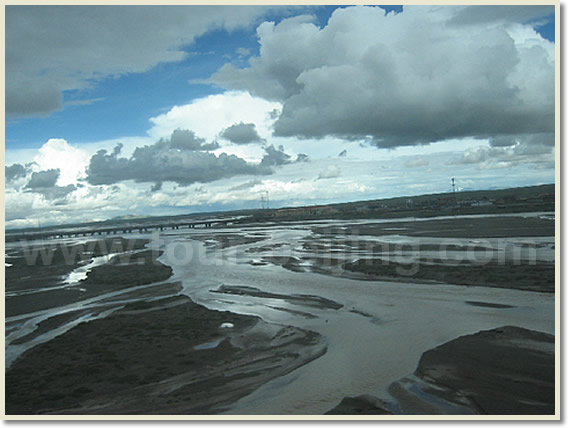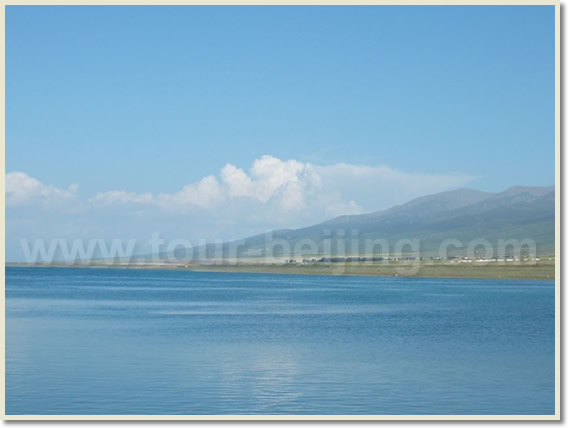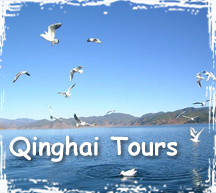Qinghai Travel Guide
 Location: Qinghai Province, which covers an area of 720,000 square kilometers, is located in the northeastern part of the Qinghai-Tibetan Plateau in western China.
Location: Qinghai Province, which covers an area of 720,000 square kilometers, is located in the northeastern part of the Qinghai-Tibetan Plateau in western China. History: The area known today as Qinghai was under the control of the Han kingdom about 2000 years ago. A large part of its area, until the early 20th century most often referred to by its Mongol name Kokonur in English, lies outside of China proper and has been an ethnic melting pot for centuries, mixing Tibetan, Han Chinese, Mongol, and Turkic influences.
Qinghai was also under Ming dynasty control during early time of the Ming, but later plagued with unrest.
In 1928, Qinghai became a province of the Republic of China. Subsequently it became the primary base for Muslim warlord Ma Bufang, before it became a province under the People's Republic of China in 1949.
Transportation: The Lanqing Railway, running between Lanzhou, Gansu and Xining, the province's capital, was completed in 1959 and is the major transportation route in and out of the province. Qinghai-Tibet Railway has become one of the most ambitious projects in PRC history. Six National Highways run through the province.
Xining Caojiabu Airport provides service to Beijing, Lanzhou, Golmud and Delingha. Smaller regional airports, such as Golmud Airport and Yushu Batang Airport, serve some of the local centers of the far-flung province; plans exist for the construction of three more by 2020.
Dining: For thousands of years, Qinghai is inhabited by the diligent Han people and other ethnic groups, including the Tibetans, Huis, Mongolians, Manchus, Tus, and Salars, who have written a long history and a brilliant culture, and developed production, which has in turn promoted the development of culinary culture.
The local flavors of Qinghai include fried flour slices, hand-pulled noodles, dry-stirred noodles, roasted mutton and Ma Ruyi‘s steamed buns.
High up on the menu are such dishes as golden fish with fa vegetables, snow chicken with Chinese caterpillar fungus, stewed hump, boiled mutton, beef with chrysanthemum, fish with chrysanthemum, steamed huang fish, lotus fish, strewed mutton, and sheep tendon with ginseng.
Nightlife: Qinghai will satisfy you with its rich nightlife ranging from cinemas and cafes to clubs and pubs.
If you want ti watch some performances in Qinghai on your trip, Qinghai Theater, the Renmin Showplace, and the Xining Cinema are some good choices.
If you want to drink beer with your friends and chat in a causual, relaxed atmosphere, here are some local bars for you to check out.
Weather: Qinghai has a continental climate. The greater part of it is dry and cold and with long winters, short summers, frequent winds, little rainfall, long hours of sunshine and great differences in temperature between day and night.
Qinghai has a mean annual temperature of 0 to 8 degrees Celsius - the hottest month, July, averaging 20 degrees Celsius and the coldest month, January, below -8 degrees Celsius - and a mean annual precipitation generally below 300 mm.
Attractions: Tuotuo River--The Tuotuo River is the source of the Yangtze River which originates from the glaciers of the Jianggendiru Snow Mountains located at the southwestern side of the highest Geladandong Peak in the Tanggula Mountain Range. The altitude of the end of the glaciers is nearly 5,500 meters.

Qinghai Lake -- Qinghai Lake is located in the north-east of Qinghai Plateau and surrounded by four mountains in altitude of 3600-5000 meters. Looking around the lake, the four mountains are like natural barriers, embrace the whole lake. From the foot of the mountains to the lake side, there is boundless grassland. Qinghai Lake lies in the centre of the mountains and grassland like a huge emerald plate. The two islands, Haixin Hill and Bird Island, are famous tourist attractions.

Questions & Answers:



